Who says whipped cream needs dairy to be decadent? This Vegan Whipped Cream recipe is a game-changer for plant-based kitchens, made with a magical secret ingredient: aquafaba!
Aquafaba is the liquid from a can of chickpeas that whips up into airy perfection, creating a dairy-free topping that’s light, fluffy, and sweetened just right.
I stumbled upon aquafaba when searching for a vegan-friendly way to top desserts, and it was love at first whip. With a touch of cream of tartar for stability and powdered sugar for sweetness, this whipped cream is as versatile as it is delicious.
Whether you’re layering it on cakes, dolloping it onto fruit, or adding it to a steaming mug of Café Latte, it never disappoints.
The best part? It’s ridiculously simple and low in calories—perfect for those looking for a guilt-free treat. The vanilla extract adds a hint of warmth, making this whipped cream taste as indulgent as the real thing.
What’s so Special About This Dish?
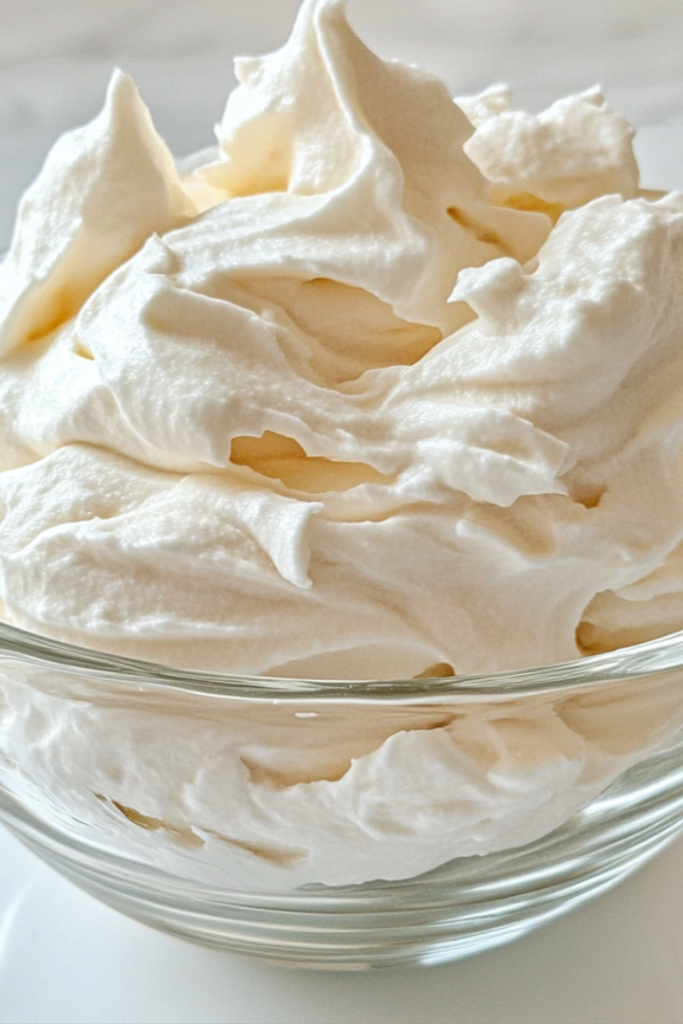
- Incredible Texture: Soft, airy peaks that rival traditional whipped cream.
- Naturally Vegan: A perfect option for plant-based desserts or non-dairy diets.
- Simple Ingredients: Just four pantry staples are needed.
- Customizable Sweetness: Adjust the powdered sugar to suit your taste.
- Magical Transformation: Watching aquafaba whip into fluffiness is so satisfying!
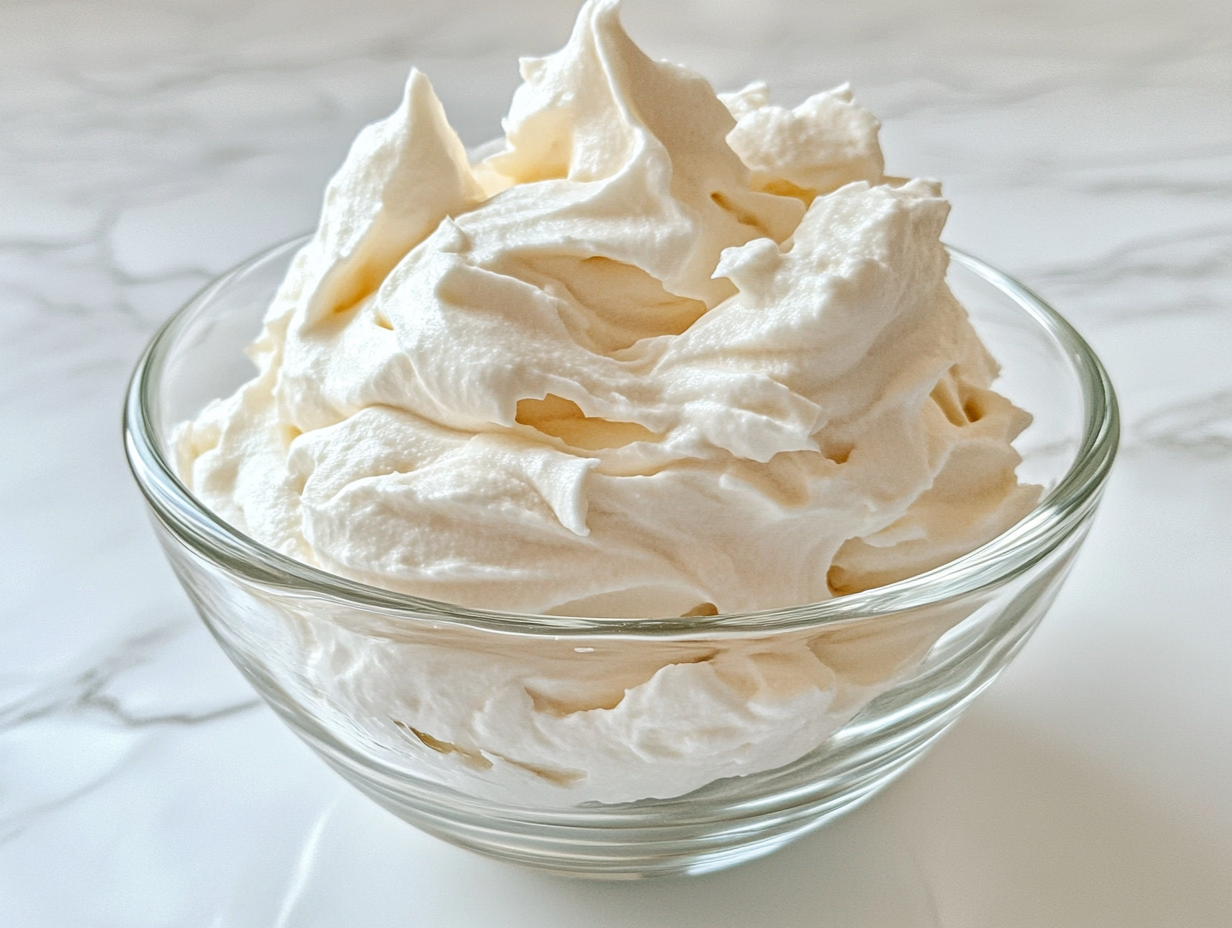
Vegan Whipped Cream Recipe
Ingredients
Equipment
Method
- Drain chickpea liquid (aquafaba) into a large bowl; reserve chickpeas for another use.
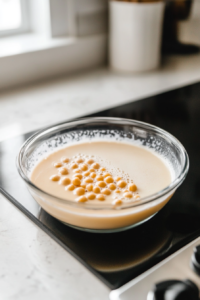
- Add cream of tartar to the aquafaba.
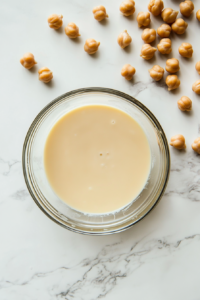
- Using a hand mixer, whip on medium speed until foamy, then increase to high speed. Beat for 3–4 minutes until stiff peaks form.
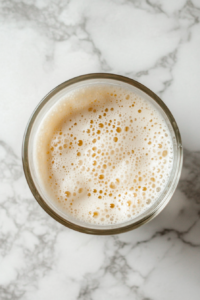
- Gradually add powdered sugar and vanilla, whipping for another minute until fluffy and smooth.
- Serve immediately or freeze leftovers for later use.

Nutritional Info:
| Nutrition | Value |
|---|---|
| Calories | 25kcal |
| Carbohydrates | 6g |
| Sodium | 1g |
| Potassium | 6g |
| Protein | 0g |
| Sugar | 6g |
Tips for Making Perfect Vegan Whipped Cream!
- Choose Low-Sodium Chickpeas: Use low- or no-sodium canned chickpeas for a neutral flavor. Higher sodium content can affect the taste of the whipped cream.
- Chill the Aquafaba: Refrigerating the aquafaba before whipping can help it reach stiff peaks faster and improve texture.
- Add Cream of Tartar: This stabilizes the aquafaba, ensuring it holds its structure when whipped.
- Use a Clean Bowl: Ensure your mixing bowl and beaters are grease-free, as any oil can prevent the aquafaba from whipping properly.
- Whip Gradually: Start whipping at a medium speed until foamy, then increase to high speed to build volume without overworking the mixture.
- Powdered Sugar for Texture: Gradually add powdered sugar to sweeten and stabilize the whipped cream. Adjust the quantity for your desired sweetness level.
- Don’t Overwhip: Stop whipping once stiff peaks form. Overwhipping can cause the mixture to deflate and lose its fluffiness.
- Add Flavor Gradually: Start with one teaspoon of vanilla extract and adjust to taste. You can also experiment with other flavors like almond or lemon extract.
- Serve Immediately: Aquafaba whipped cream is best served fresh. If storing, use it within a day or freeze it for a longer shelf life.
- Revive Leftovers: If the whipped cream deflates in storage, you can briefly re-whip it to regain some of the structure.

Joe Miller is the passionate founder of Food Landscape Insight, where he shares his love for cooking and culinary experiences. Growing up in a family-run diner, Joe was immersed in the vibrant world of food from an early age. The kitchen became his canvas, and food, his way of storytelling.
Through years of experimentation and learning, Joe honed his skills and started his blog to inspire others to embrace the joy of cooking. Each recipe he shares is a blend of tradition, creativity, and the heartfelt memories that food brings to life, all with the aim of fostering a deeper connection to food.




